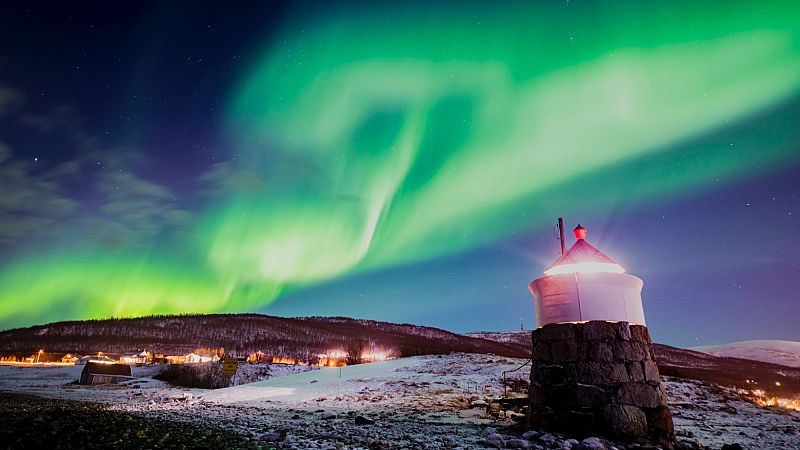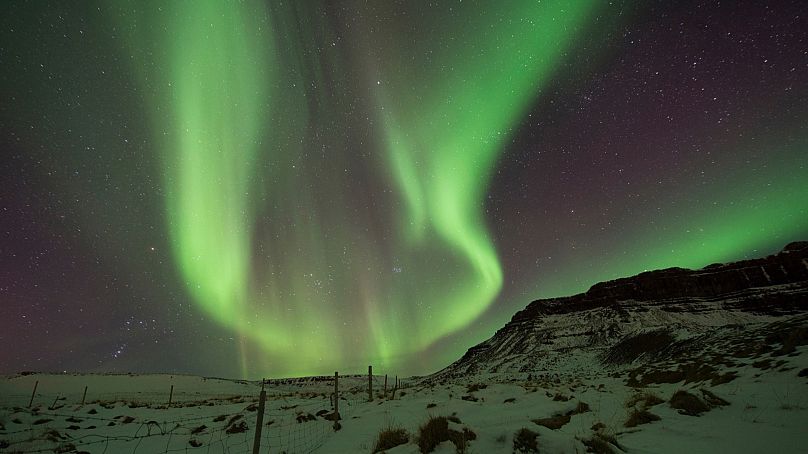Noctourism: Why the Northern Lights will be even more impressive this winter - and where to see them

The elusive aurora borealis could put on its strongest performance this winter in over a decade, as solar activity reaches its peak.
Last year, NASA confirmed that the sun was reaching its maximum phase in its 11-year solar cycle, which is expected to last until March 2026.
“During solar maximum, the number of sunspots, and therefore, the amount of solar activity, increases,” explains Jamie Favors, director of the Space Weather Program at NASA Headquarters.
“This increase in activity provides an exciting opportunity to learn about our closest star — but also causes real effects at Earth and throughout our solar system.”
Solar activity can strongly influence conditions in space known as space weather, which can affect satellites and navigation systems such as radio and GPS, as well as power grids on Earth.
It can also lead to an increased visibility of the Northern Lights, and has resulted in a growing number of travellers planning trips this winter solely around aurora activity.
The most ‘sought-after’ travel experience
The surge in solar activity has turned the Northern Lights into one of the most “sought-after travel experiences of the decade”, online travel agency eSkyGroup tells Euronews Travel.
Jaroslaw Grabczak of eSky Group says the “bucket-list event” has resulted in extraordinarily high demand for a plethora of prime-positioned countries - even if price elasticity remains low.
“In practice, this means that even significant increases in flight or accommodation prices do little to discourage travellers," Grabczak says.
“Travellers are reserving trips to key viewing destinations up to a year in advance. Normally, such bookings would occur just a few months before departure.”
The travel expert therefore recommends tourists “plan ahead” to secure availability and manage costs, especially as small towns and remote regions that are ideal for viewing the Northern Lights have limited accommodation offerings.
Which are the best countries to see the Northern Lights?
In the 2024/2025 winter season, eSky Group witnessed a significant increase in travel interest to Nordic countries.
The largest growth in the number of bookings has been recorded for Finland, which increased by a staggering 2,300 per cent.
“Finnish Lapland offers a cosy, magical experience, with options to view the Aurora from the comfort of a glass igloo or to combine the chase with a visit to Santa Claus Village in Rovaniemi,” the travel firm explains.
The high overall number of current bookings, however, is for Iceland, which has seen a 2,200 per cent increase in the last year.
The official Northern Lights season in Iceland runs from September to March. During this time of the year, days are dark and short - meaning tourists have more time to spot the displays.
Gísli S. Brynjólfsson of Icelandair says the Icelandic Met Office provides a Northern Lights forecast with predictions for the coming three days, allowing visitors to travel to areas with greater visibility.
“The map displays cloud coverage over Iceland, and a numbered KP index scale is located in the top right corner, indicating the level of solar activity,” Brynjólfsson tells Euronews Travel. “The scale ranges from 0 to 9 (very low to very strong).”
The expert recommends heading away from light pollution to maximise your chances of a glimpse, although the brightest aurora can still be seen from cities. The peak viewing time is generally considered 9pm until 2am, so it may be worth staying up late to get the best show.
Bookings to Norway have also jumped 126 per cent, and it is often considered one of the best countries to spot the Northern Lights, especially in the northern regions.
“Tromsø provides an excellent mix of city life and easy access to the dark fjords, maximising viewing opportunities,” eSky Group adds.
Sweden is also slated for a visitor boom, with eSky Group recording a 91 per cent increase in bookings. The country’s appeal centres on the clear, dry microclimate of Abisko National Park and the famous Aurora Sky Station, known as the most scientifically reliable spot for a sighting due to its "blue hole" of clear sky.


